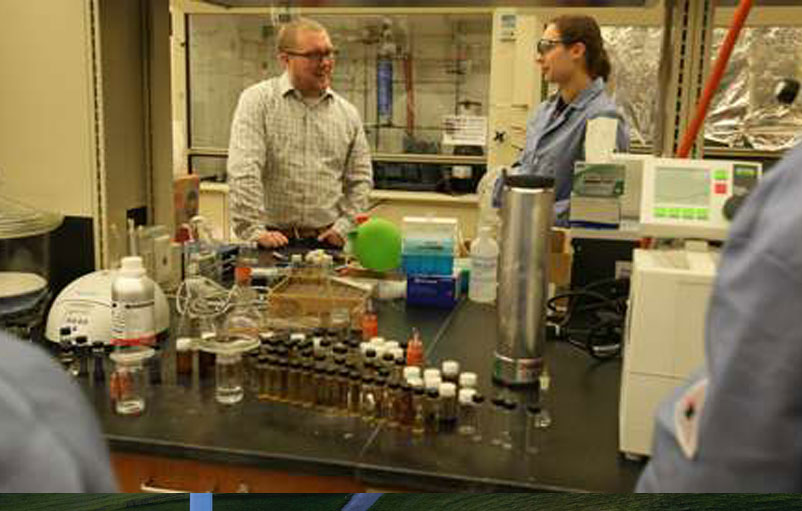
William & Mary chemist William McNamara is taking a "bio-inspired" approach to the world's energy crisis by turning to nature's very own chemical power plant: photosynthesis.
McNamara and his students are working on creating cleaner, more efficient and more cost-effective ways to harvest energy by mimicking the way plants use sunlight to create their own energy.
"If you look outside there are all these organisms that are doing exactly what we want to do. Plants take in sunlight, and they're able to make a fuel out of it in the form of sugars that they use to power themselves," McNamara said.
One of the most effective resources for harvesting "greener" energy uses sunlight as a natural energy source. Solar cells absorb sunlight to generate electricity, which can be used to power devices or stored in batteries.
Solar cells are a greener way of harvesting energy, but some major limitations inhibit the technology from replacing traditional energy sources. According to McNamara, one limitation is that when the sun is not shining, no electricity is being harvested and stored in batteries. This means only a certain amount of energy can be collected. In the dark, you are on battery power and experience a loss of efficiency. He added that solar cells also are very expensive and so traditional solar technology is not as widespread as it could be.
"These things are often driven economically as to what we use as a technology. It's not yet feasible for us to be using solar everything," McNamara said. "The pricing isn't as competitive as oil right now. It would take an overhauling of our infrastructure to make it more usable."
McNamara, assistant professor of chemistry, was inspired by the thought that nature had already created superior ways to use sunlight. His "bio-inspired" approach begins with sunlight and ends with hydrogen gas that can be used as a fuel.
Basically, he explained, the process runs a bit of solar power through water and a catalyst reduces protons to hydrogen gas, leaving some leftover water.
"If your catalyst is really efficient, you would produce more hydrogen gas then you could possibly use in an evening when the sun is not shining," McNamara said. "And there is a low carbon footprint."